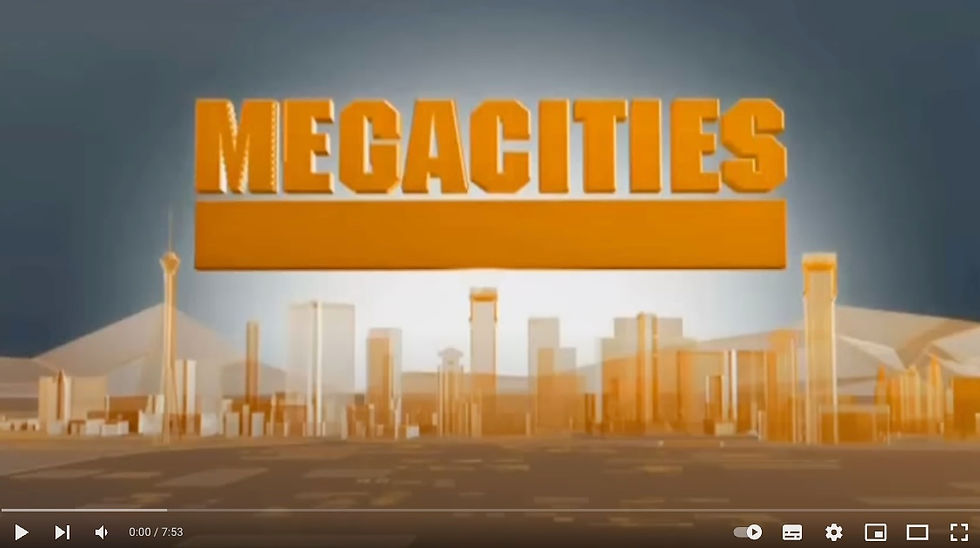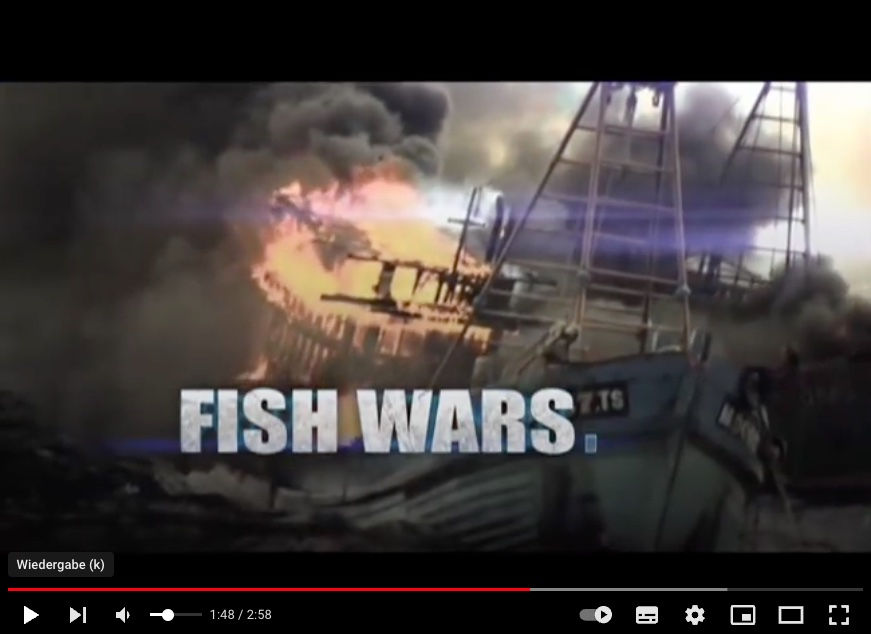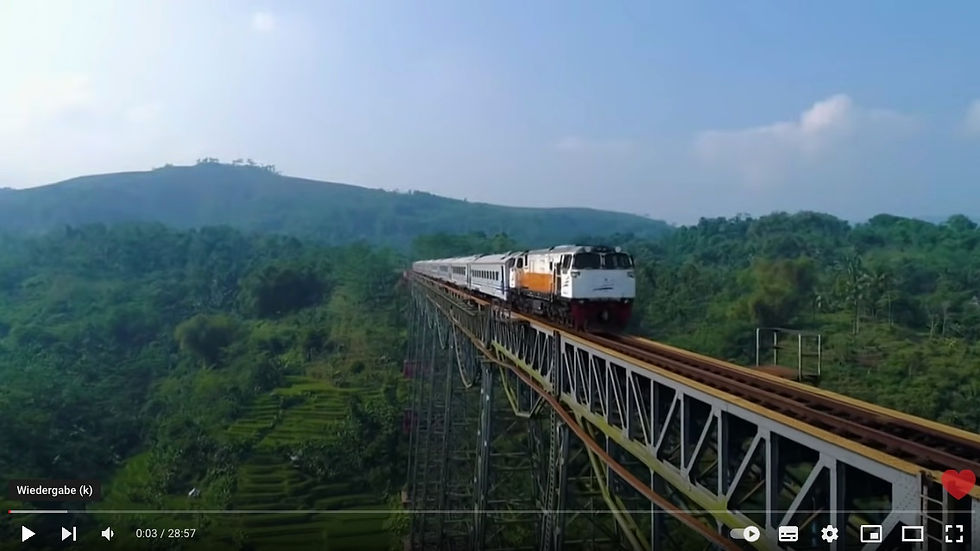
FILM PORTFOLIO

National Geographic - Megacities Jakarta
46:05 m | 2016
E Megacities uncovers the rapid growth, new forms of spatial density of population, formal and informal economics as well as poverty, crime, and high levels of social fragmentation. Megacities takes a revolutionary look at the places where most of us live: the modern Metropolis. Megacities focuses on the single aspect of a city's infrastructure which best informs the life and functions of that place. Each city is examined as an organism: living, breathing, and growing. In order to survive, these infrastructures must each function independently, and yet blend into a harmony of man, machine, strategy and system, which defines it as a mega city. Megacities examines the infrastructure of eight iconic locations around the world: Las Vegas, Mexico City, Hong Kong, London, Paris, Sao Paulo, Mumbai and New York. Through dramatic storytelling, unparalleled access and sophisticated computer graphics blended seamlessly with live action, Megacities takes viewers beyond the monuments - and into the machinery - that is the true, living marvel of each mega city.
D Megacities deckt das rasante Wachstum, neue Formen der räumlichen Dichte der Bevölkerung, formelle und informelle Wirtschaft sowie Armut, Kriminalität und ein hohes Maß an sozialer Fragmentierung auf. Megacities wirft einen revolutionären Blick auf den Ort, an dem die meisten von uns leben: die moderne Metropole. Megacities konzentriert sich auf den einzelnen Aspekt der Infrastruktur einer Stadt, der das Leben und die Funktionen dieses Ortes am besten prägt. Jede Stadt wird wie ein Organismus untersucht: lebendig, atmend und wachsend. Um zu überleben, müssen diese Infrastrukturen unabhängig voneinander funktionieren und doch zu einer Harmonie aus Mensch, Maschine, Strategie und System verschmelzen, die sie als Megastadt auszeichnet. Megacities untersucht die Infrastruktur von acht ikonischen Orten auf der ganzen Welt: Las Vegas, Mexiko-Stadt, Hongkong, London, Paris, Sao Paulo, Mumbai und New York. Durch dramatische Erzählungen, beispiellosen Zugang und ausgefeilte Computergrafiken, die nahtlos mit Live-Action verschmelzen, führt Megacities die Zuschauer über die Denkmäler hinaus - und in die Maschinerie -, die das wahre, lebendige Wunder jeder Megastadt ist.

Al Jazeerah, Witness: Hearts and Minds
11:50 m | 2009
E
Rageh Omaar travels to the world's most populous Muslim nation, Indonesia, to make a special documentary about the struggle between moderate and radical Islam in that country.
D
Rageh Omaar reist in die bevölkerungsreichste muslimische Nation der Welt, nach Indonesien, um eine Sonderdokumentation über den Kampf zwischen gemäßigtem und radikalem Islam in diesem Land zu drehen.

Australian Broadcasting Corporation (ABC); Four Corners Program - Smuggler's Paradise
45:27 m | 2010
E How the biggest people smuggling networks in Indonesia have moved their operations to Australia.In the 2010 programme Smugglers' Paradise, Four Corners exposed the people smugglers operating out of Indonesia. Now reporter Sarah Ferguson reports how the same people were involved in the deaths of 97 people at sea. Former Prime Minister Kevin Rudd called people smugglers "the scum of the earth“. This programme shows how many of them posed as asylum seekers and persuaded the government to grant them refugee status and residency. Now they ply their lucrative and sometimes deadly trade, living off taxpayers' money. What Four Corners finds out is shocking and calls into question the whole process of assessing refugees. How did they get here and how can they operate their criminal network with impunity right under the noses of the police and immigration authorities?
D Wie die größten Menschenschmugglernetzwerke in Indonesien ihre Aktivitäten nach Australien verlagert haben. In der 2010 ausgestrahlten Sendung "Smugglers' Paradise" deckte Four Corners die von Indonesien aus operierenden Menschenschmuggler auf. Jetzt berichtet Reporterin Sarah Ferguson, wie dieselben Personen in den Tod von 97 Menschen auf See verwickelt waren. Der ehemalige Premierminister Kevin Rudd nannte Menschenschmuggler "den Abschaum der Menschheit". In dieser Sendung wird gezeigt, wie viele von ihnen sich als Asylbewerber ausgeben und die Regierung überreden konnten, ihnen den Flüchtlingsstatus und die Aufenthaltsgenehmigung zu gewähren. Jetzt üben sie ihr lukratives und manchmal tödliches Geschäft aus und leben von Steuergeldern. Was Four Corners herausfindet, ist schockierend und stellt das gesamte Verfahren zur Beurteilung von Flüchtlingen in Frage. Wie sind sie hierher gekommen und wie können sie ihr kriminelles Netzwerk ungestraft direkt vor der Nase von Polizei und Einwanderungsbehörden betreiben?

National Geographic - Fish Wars
2:58 m | 2012
E
This powerful documentary takes a hard look at the fishing industry affecting the coral triangle in South East Asia. It reveals the scale and source of the problem and follows the dedicated people determined to save the last oceanic eden in the world
D
Dieser eindrucksvolle Dokumentarfilm wirft einen harten Blick auf die Fischereiindustrie, die das Korallendreieck in Südostasien bedroht. Er enthüllt das Ausmaß und die Ursachen des Problems und folgt den engagierten Menschen, die entschlossen sind, das letzte ozeanische Paradies der Welt zu retten

British Broadcasting Corporation (BBC) - Luwak Coffee
26:08m | 2013
E The cruel secret of coffee in our world - Kopi Luwak - Civet Cats - Indonesia. It is marketed as one of the rarest and most expensive coffees in the world and sold at exorbitant prices in well-known luxury shops and coffee chains, simply because of the story behind its production. Consumers are told that this designer drink, Kopi Luwak, comes from civet cats that roam the wild, eating the finest coffee berries and excreting the beans intact. Their droppings are then collected by hand by the locals. For Our World, Chris Rogers made an undercover trip to Indonesia and found that advertisements often don't match reality. Instead, he discovers a gruesome picture of civets being intensively bred in cruel conditions and their
D Wie die größten Menschenschmugglernetzwerke in Indonesien ihre Aktivitäten nach Australien verlagert haben. In der 2010 ausgestrahlten Sendung "Smugglers' Paradise" deckte Four Corners die von Indonesien aus operierenden Menschenschmuggler auf. Jetzt berichtet Reporterin Sarah Ferguson, wie dieselben Personen in den Tod von 97 Menschen auf See verwickelt waren. Der ehemalige Premierminister Kevin Rudd nannte Menschenschmuggler "den Abschaum der Menschheit". In dieser Sendung wird gezeigt, wie viele von ihnen sich als Asylbewerber ausgeben und die Regierung überreden konnten, ihnen den Flüchtlingsstatus und die Aufenthaltsgenehmigung zu gewähren. Jetzt üben sie ihr lukratives und manchmal tödliches Geschäft aus und leben von Steuergeldern. Was Four Corners herausfindet, ist schockierend und stellt das gesamte Verfahren zur Beurteilung von Flüchtlingen in Frage. Wie sind sie hierher gekommen und wie können sie ihr kriminelles Netzwerk ungestraft direkt vor der Nase von Polizei und Einwanderungsbehörden betreiben?

British Broadcasting Corporation (BBC) Documentary on ISIS
05:15 m | 2020
E BBC News traces Indonesian ISIS suicide bombers Ruille Zeke and Ulfa, who were hiding in Istanbul, Turkey, before being deported to Indonesia. The couple took part in a de-radicalisation programme and moved to Malaysia, where they re-established contact with IS. From there, they moved to the Philippines and suffered martyrdom in Sulu, Mindanao. On the other hand, Sri Musfiah, a consultant in Indonesia's deradicalisation programme, said there was no guarantee that former fighters who participated in the deradicalisation programme were completely clean. "We were quite surprised when we heard that they became suicide bombers, because at the rehabilitation centre they were the most cooperative," Sri told BBC Middle East correspondent Quentin Sommerville.
D BBC News spürt den indonesischen ISIS-Selbstmordattentätern Ruille Zeke und Ulfa nach, die sich in Istanbul (Türkei) versteckten, bevor sie nach Indonesien abgeschoben wurden. Das Paar nahm an einem De-Radikalisierungsprogramm teil und zog nach Malaysia, wo es erneut Kontakt zum IS aufnahm. Von dort zogen sie auf die Philippinen und erlitten in Sulu, Mindanao, das Martyrium. Andererseits sagte Sri Musfiah, Berater im indonesischen Deradikalisierungsprogramm, dass es keine Garantie dafür gebe, dass ehemalige Kämpfer, die an dem Deradikalisierungsprogramm teilgenommen haben, völlig clean seien. "Wir waren ziemlich überrascht, als wir hörten, dass sie zu Selbstmordattentätern wurden, denn im Rehabilitationszentrum waren sie am kooperativsten", so Sri gegenüber BBC-Nahostkorrespondent Quentin Sommerville.

British Broadcasting Corporation (BBC) - Great Asian Railway Journeys
28:57 m | 2020
E Michael Portillo's 2500-mile railway journey through Southeast Asia reaches its southernmost point in Indonesia. His journey takes him across the island of Java, the heart of this archipelago of 270 million people. In the vibrant capital Jakarta, Michael discovers Indonesia's Dutch colonial past and its rich history as a port city, but also the city's uncertain future. He fights his way through the city's notorious traffic, takes a colourful bike tour, tries out the newly introduced MRT metro and eats Jakarta's famous street food. He admires the Bogor Botanical Gardens, now a centre for research and conservation, and notes that they were created by an Englishman, Sir Thomas Stamford Raffles, the former governor of Java.
D Michael Portillos 2500 Meilen lange Eisenbahnreise durch Südostasien erreicht ihren südlichsten Punkt in Indonesien. Seine Reise führt über die Insel Java, das Herzstück dieses Archipels mit 270 Millionen Einwohnern. In der pulsierenden Hauptstadt Jakarta entdeckt Michael die niederländische Kolonialvergangenheit Indonesiens und seine reiche Geschichte als Hafenstadt, aber auch die ungewisse Zukunft der Stadt. Er kämpft sich durch den berüchtigten Verkehr der Stadt, unternimmt eine farbenfrohe Fahrradtour, probiert die neu eingeführte MRT-Metro aus und isst Jakartas berühmtes Streetfood. Er bewundert die Botanischen Gärten von Bogor, die heute ein Zentrum für Forschung und Naturschutz sind, und stellt fest, dass sie von einem Engländer, Sir Thomas Stamford Raffles, dem ehemaligen Gouverneur von Java, angelegt wurden.